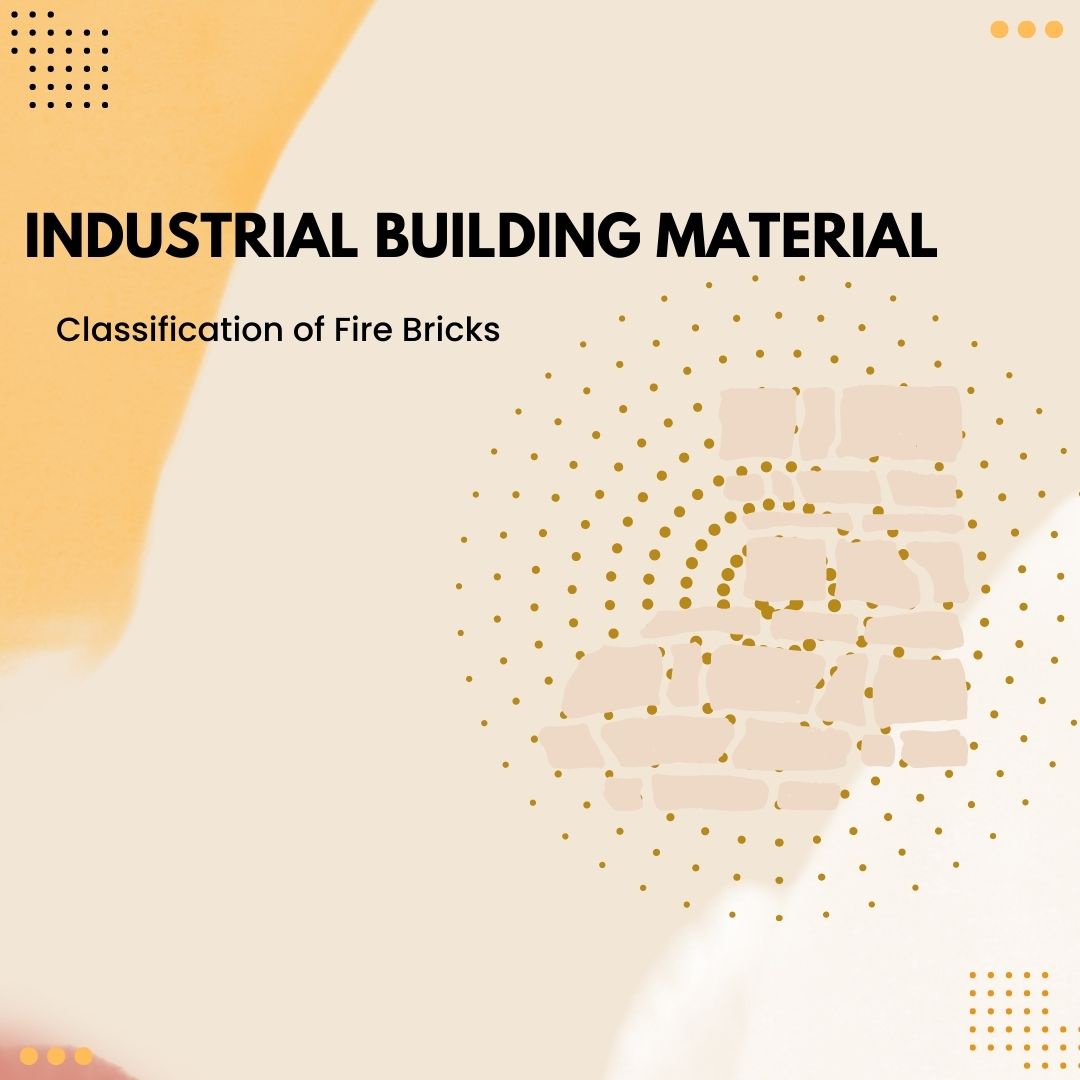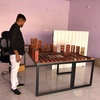Fire bricks are a crucial industrial building material known for their exceptional heat resistance and durability. They play a vital role in applications that involve high temperatures, such as furnaces, kilns, fireplaces, and industrial ovens. Understanding the classification of fire bricks is essential for selecting the right type based on specific needs and requirements. In this comprehensive blog, we will explore the various types of fire bricks, their composition, and their applications. Whether you're a builder, architect, or simply curious about industrial building materials, this article will serve as your guide to understanding the classification of fire bricks.
Refractory Bricks and Their Composition
Refractory bricks, commonly known as fire bricks, are made from high-temperature-resistant materials designed to withstand extreme heat and thermal stress. The composition of fire bricks determines their classification and suitability for different applications. Here are some common types:
a) Silica Bricks: Composed primarily of silica, these wire cut bricks are resistant to acidic corrosion and are suitable for temperatures up to 1800°C. They find applications in glass manufacturing, ceramics, and non-ferrous metal industries.
b) Fireclay Bricks: Made from a mixture of clay and other refractory materials, fireclay bricks exhibit excellent resistance to heat and thermal shock. They are widely used in furnaces, kilns, and chimneys.
c) Magnesia Bricks: Magnesia bricks are made from magnesium oxide, offering high-temperature resistance up to 2000°C. They are commonly used in steelmaking, cement, and chemical industries.
d) Insulating Bricks: These bricks have low thermal conductivity, providing excellent insulation properties. They are ideal for applications where reducing heat loss is crucial, such as in industrial kilns and heat exchangers.
Classification Based on Alumina Content:
Fire bricks can also be classified based on their alumina (Al2O3) content, which affects their temperature resistance and mechanical properties. The common classifications are:
a) High Alumina Bricks: These bricks contain a high percentage of alumina, typically above 48%. They exhibit excellent refractory properties and can withstand temperatures up to 1800°C. High alumina bricks are widely used in steel plants, petrochemical industries, and thermal power plants.
b) Medium Alumina Bricks: With an alumina content ranging from 35% to 48%, medium alumina bricks offer good thermal stability and resistance to thermal shock. They find applications in various industries, including cement, ceramics, and non-ferrous metal processing.
c) Low Alumina Bricks: These bricks have an alumina content below 35%. While they have lower temperature resistance compared to high alumina bricks, they are cost-effective and suitable for applications where lower temperatures are involved, such as in boilers and incinerators.
Source: Bricks Street
Applications of Fire Bricks:
Fire bricks are widely used in numerous industries due to their ability to withstand high temperatures and harsh environments. Some common applications include:
a) Furnaces and Kilns: Fire bricks line the interior of furnaces and kilns to provide insulation and protect against extreme heat. They help maintain consistent temperatures and prolong the lifespan of these industrial heating systems.
b) Fireplaces and Chimneys: Fire bricks form the inner lining of fireplaces and chimneys, preventing heat transfer to combustible materials and ensuring the safety and efficiency of these structures.
c) Industrial Ovens and Incinerators: Fire bricks are essential in industrial ovens and incinerators where high temperatures are involved. They provide insulation and structural integrity, allowing for efficient heat retention and proper waste disposal.
d) Foundries and Metal Processing: Fire bricks are utilized in foundries and metal processing industries to construct crucibles and refractory linings for melting and casting processes.
e) Glass and Ceramics Industry: Fire bricks are extensively used in glass and ceramics manufacturing, where high temperatures are required for melting and shaping raw materials.
Considerations when Choosing Fire Bricks:
a) Temperature Requirements: Select fire bricks that can withstand the maximum temperature of the application. Consider the temperature fluctuations and thermal shock resistance needed for the specific industrial process.
b) Chemical Compatibility: Ensure the fire bricks are chemically compatible with the substances they will come into contact with during operation. Some environments may require acid-resistant or alkali-resistant fire bricks.
c) Insulating Properties: If thermal insulation is essential, opt for insulating fire bricks with low thermal conductivity to minimize heat loss and improve energy efficiency.
d) Physical Dimensions and Shapes: Fire bricks are available in various shapes and sizes. Consider the specific requirements of the application and choose bricks that can be easily installed and aligned.
e) Expert Advice and Supplier Reputation: Consult with experts in refractory materials and choose reputable suppliers to ensure the quality and reliability of the fire bricks.
Also Read: traditional brick
Conclusion:
Fire bricks are a critical component of industrial construction, providing excellent resistance to high temperatures and thermal stress. Understanding the classification of fire bricks based on their composition and alumina content empowers builders, architects, and industrial professionals to select the most suitable bricks for their specific needs. Whether it's lining a furnace, constructing a fireplace, or building a kiln, choosing the right fire bricks ensures durability, safety, and optimal performance in high-temperature applications. By considering the various types of fire bricks and their applications, you can make informed decisions when incorporating this essential industrial building material into your projects.


No comments yet